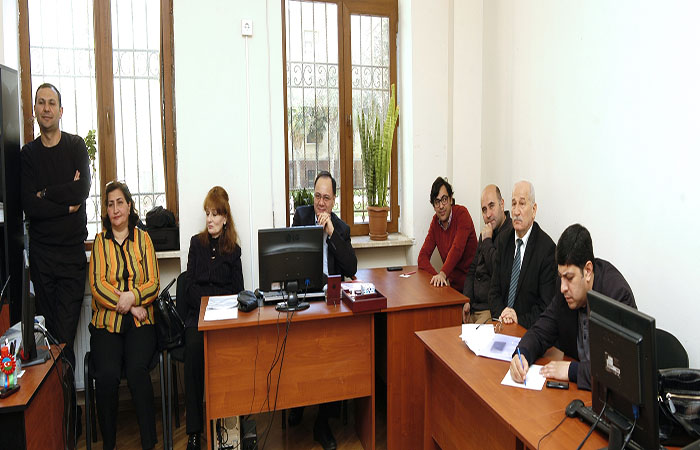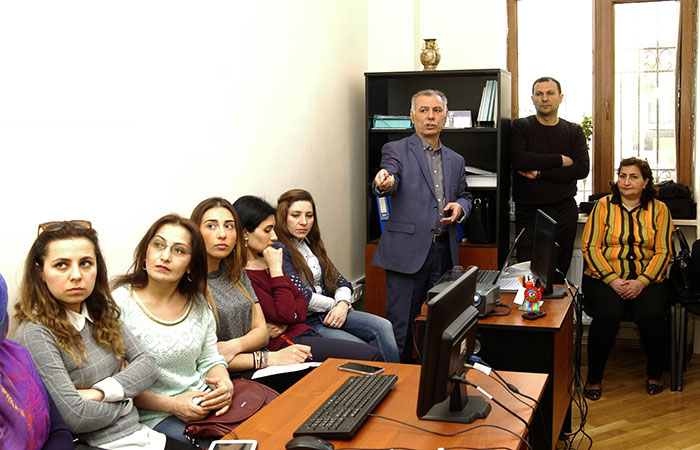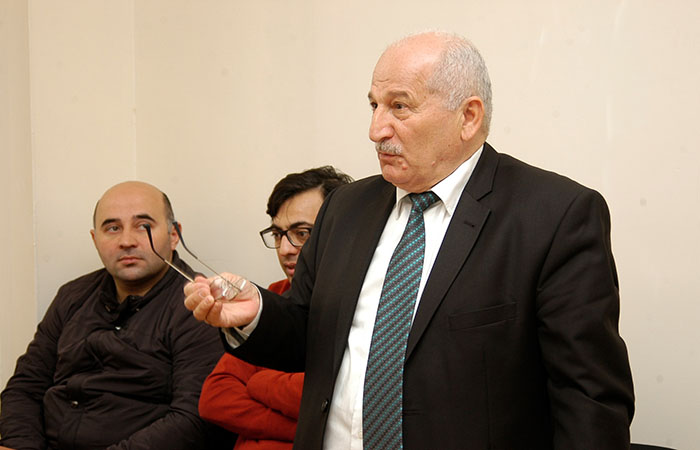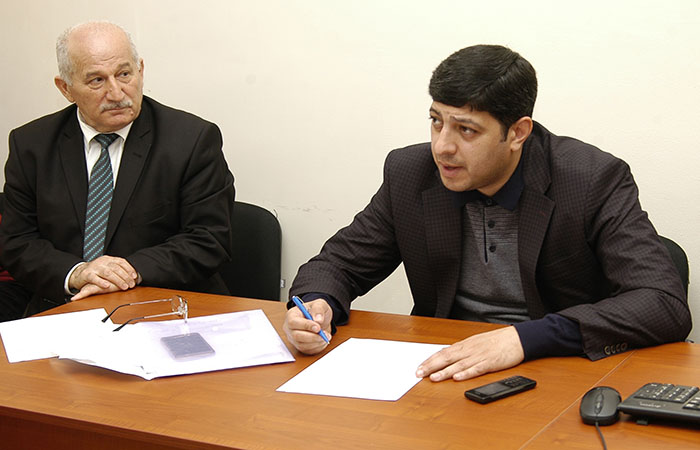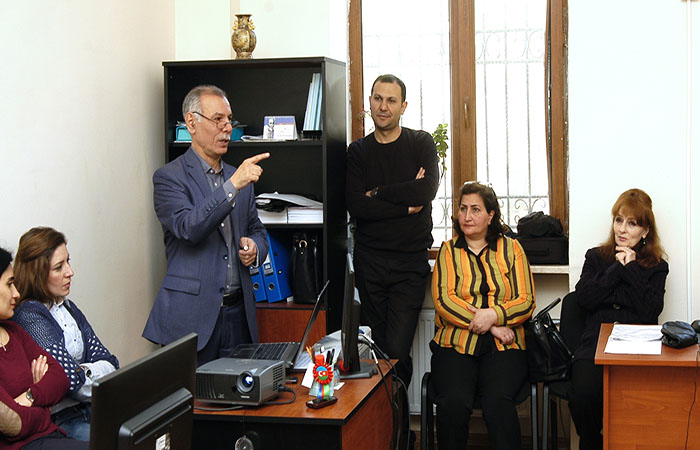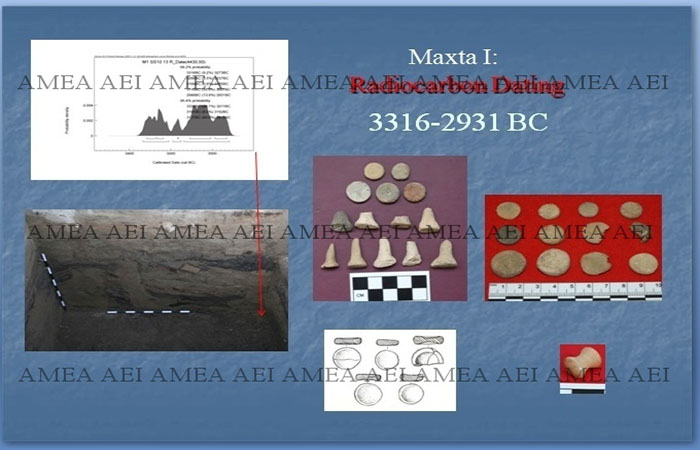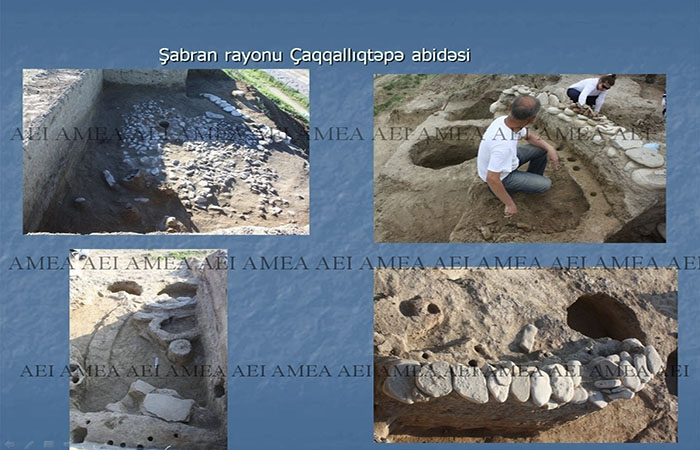- A-
- A
- A+
The event discussed the studies conducted in the Makhta settlements and Chakkaliktepe relating to the Kur-Araz culture
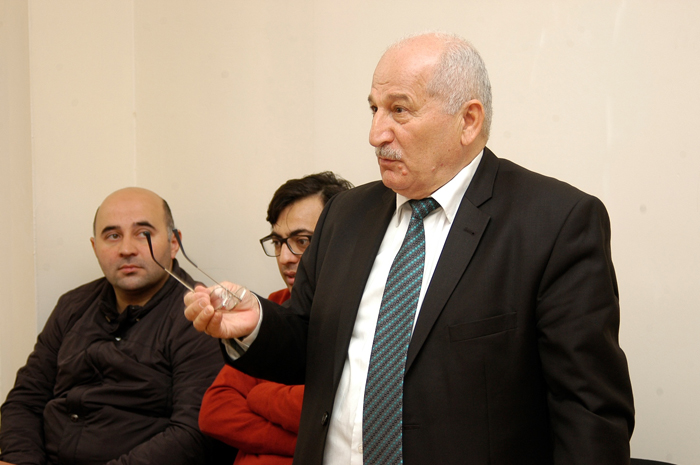
ANAS Institute of Archeology and Ethnography held next theoretical seminar under the chairmanship of Doctor of Historical Sciences Asadulla Jafarov on March 27.
Opening the event, Asadulla Jafarov noted that, purpose of organizing such seminars in scientific and educational institutions is to increase interest in science, exchange of experience, pooling of scientific and potential opportunities and joint development of research. At the seminar discussions that will be held in the field of archeology, ethnography, numismatics, will pave the way for the achievement of new data and mutual exchange of experience.
Informing that the report on "The First Fossils of Makhta (Sharur) and Chakkalliktepe (Shabran) and Some Problems of the Kur-Araz Culture" will be listened at the seminar, A. Jafarov spoke about the urgency of the problem of the Kura-Araz culture in the world and Azerbaijani archeology.
He brought to the attention that, summing up preliminary data on this culture in the 40s of the XX century; Soviet scientists called it the "Karabakh culture". After some time, as a result of the analysis of the geography of collected materials and findings, the name of culture entered the scientific circulation as "Culture of the Early Bronze Age Kura-Araz". Azerbaijan is one of the unique corners of the world, on the territory of which there are monuments and settlements that have the oldest history.
Then the head of the Department of Education and International Relations of the Institute of Archeology and Ethnography of ANAS, Doctor of Philosophy in History Safar Ashurov presented a scientific report on the topic.
Talking about the history of the study of the Kura-Araz culture on the territory of Azerbaijan and the features of the discovered monuments related to this culture, S. Ashurov noted that, the conducted studies established that the territories of the spread of the Kura-Araz archaeological culture included the South Caucasus, Eastern Anatolia, modern Syria and Lebanon. Recent studies have shown that even in Iran there are local variations of this culture.
Informing about the ancient settlement of Makhta, the reporter noted that it is located at an altitude of 780 -790 m above sea level, and Chakkalliktepe - at an altitude of 110 m.
It was noted that, the monument of Makhta I was first investigated by Corresponding Member of ANAS V.Aliyev and S.Ashurov in 1988-1989. In 2006, US specialists took part in the study of the monument. Based on the results of research, the main form of houses built here is round. In the course of the excavations, quadrangular structures that were considered a temple were discovered.
The scientist has brought to attention the features of the classification of black enameled dishes, idols, anthropomorphic and zoomorphic figures, tools and other artifacts.
Then S.Ashurov informed in detail about the settlement of Chakkalyktepe. It was noted that the thickness of the cultural layer of the settlement is about 4 m. Some characteristic features of Chakkalyktepe are similar to the monuments of Velikent of Dagestan, belonging to the Kura-Araz culture. Relative dating Chakkaliktepe - 3300-3200 BC.
Related to the late Bronze Age, both settlements have genetic connections with the monuments and artifacts of Azerbaijan from the Neolithic and Chalcolithic epochs.
In conclusion, the scientist-researcher answered numerous questions of the seminar participants.
At the event Asadulla Jafarov, Ph.D. in History Farhad Guliyev, Zaur Hasanov, Bakhtiyar Jalilov and others noted the importance for the world and Azerbaijani science of scientific research conducted under the leadership of Safar Ashurov and stressed the need to continue excavations in the settlements.
Summing up the seminar, A. Jafarov noted that carrying out field research will be an important stage in the study of the specific features of the Kura-Araz archaeological culture.
©All rights are reserved. Citing to www.science.gov.az is necessary upon using news.

 Elm TV
Elm TV
 Photo
Photo
 Video
Video
